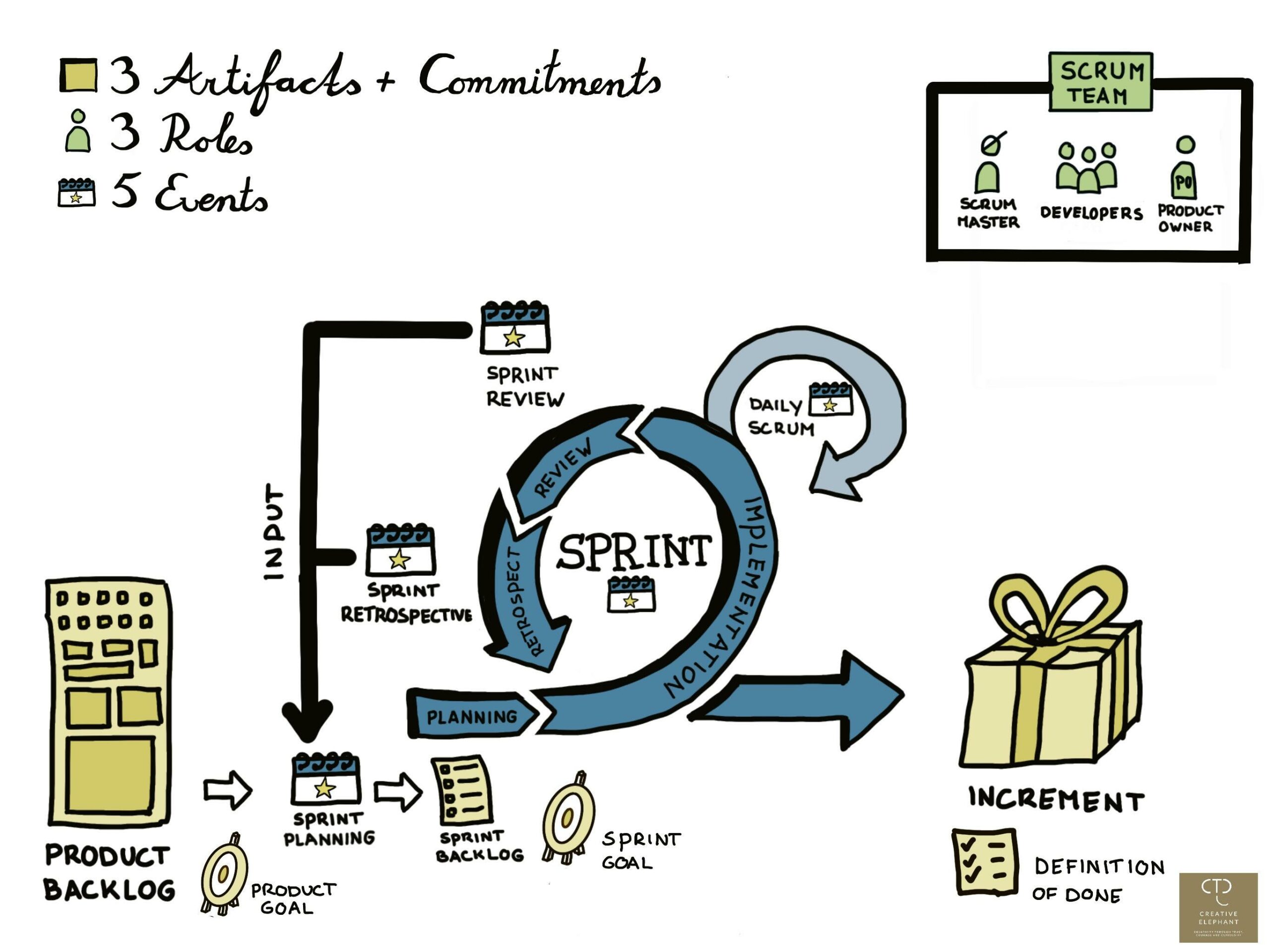The rapidly shifting technological landscape and its adaptations characterize our age. More than ever, companies and organizations are pursuing more efficient ways to manage tasks, create products, and deliver services. Among several methodologies used today, the Scrum approach stands out. But to fully appreciate its innate specifics and importance, let us take a journey back to where it all began.
Historical Context
In the fertile soil of management strategies, Scrum began as a seed sown by Hirotaka Takeuchi and Ikujiro Nonaka in 1986. These accomplished researchers coined the term ‘Scrum’ in the context of product development in their Harvard Business Review article titled “The New New Product Development Game.” The sporting analogy drawn from Rugby was intended to suggest a ‘holistic’ or ‘all-at-once’ approach to product development. The objective was to challenge the ‘relay race’ or ‘waterfall model,’ which dominated the industry then.
Jeff Sutherland and Ken Schwaber turned this innovative approach into a fully-fledged and organized agile methodology around the early 1990s. They presented their ideas in a paper at the OOPSLA conference in 1995, providing the first comprehensive outline. In 2001, they copublished the famous Agile Manifesto, making Scrum one of the most widely used agile frameworks globally, revolutionizing project management principles.
The Intricacies of Scrum Methodology
Scrum embodies a flexible, iterative approach to product development, where the focus emphasizes delivering the highest value in the shortest time. Belonging to the larger Agile framework, it paves the way for teams to address complex adaptive problems by maintaining productivity and creativity.
The Scrum Team
The Scrum Team comprises three primary roles: the Product Owner, the Scrum Master, and the Development Team.
The Product Owner is the stakeholders’ voice and the overall project visionary. They handle the Product Backlog and determine the priority of tasks based on their value to the project.
The Scrum Master, often seen as a servant-leader, ensures that the team adheres to the methodology principles and values. They eliminate potential distractions and impediments to the team’s progress.
The Development Team is a group of self-organizing professionals responsible for delivering the final product. They decide how work will be divided during a sprint (a set period for specific work to be completed).
Scrum Activities
Scrum methodology revolves around specific activities: Sprint Planning, Daily Scrum Meetings, Sprint Review, and Sprint Retrospective.
In Sprint Planning, the team discusses and agrees on the Product Backlog items to be completed in the upcoming Sprint.
The Daily Scrum is a short stand-up meeting to update the team members about what each accomplished the previous day, what they will be working on that day, and whether there are any impediments in the way.
After each Sprint, the team demonstrates their completed work to stakeholders during a Sprint Review. They take the opportunity to collect feedback for future Sprints.
Additionally, there is the Sprint Retrospective, a meeting for the Scrum Team to reflect on the past Sprint and make continuous improvements for the next Sprint.
Scrum Artifacts
The guide recommends three primary artifacts to manage work: Product Backlog, Sprint Backlog, and Increment.
The Product Backlog lists all features, functions, requirements, enhancements, and bug fixes identified for a product. It evolves with the project and can be continuously updated.
The Sprint Backlog is a selection of items from the Product Backlog that the team commits to complete during a Sprint.
The Increment is the sum of all the Product Backlog items completed during a Sprint and previous Sprints, which together form the product.
A powerful framework
Scrum is a simple yet powerful framework that revolutionizes project management. It leverages the power of iterative progress, team collaboration, and continuous feedback. It gives teams a foundation to thrive on change and uncertainty, fostering productivity, creativity, and satisfaction.



